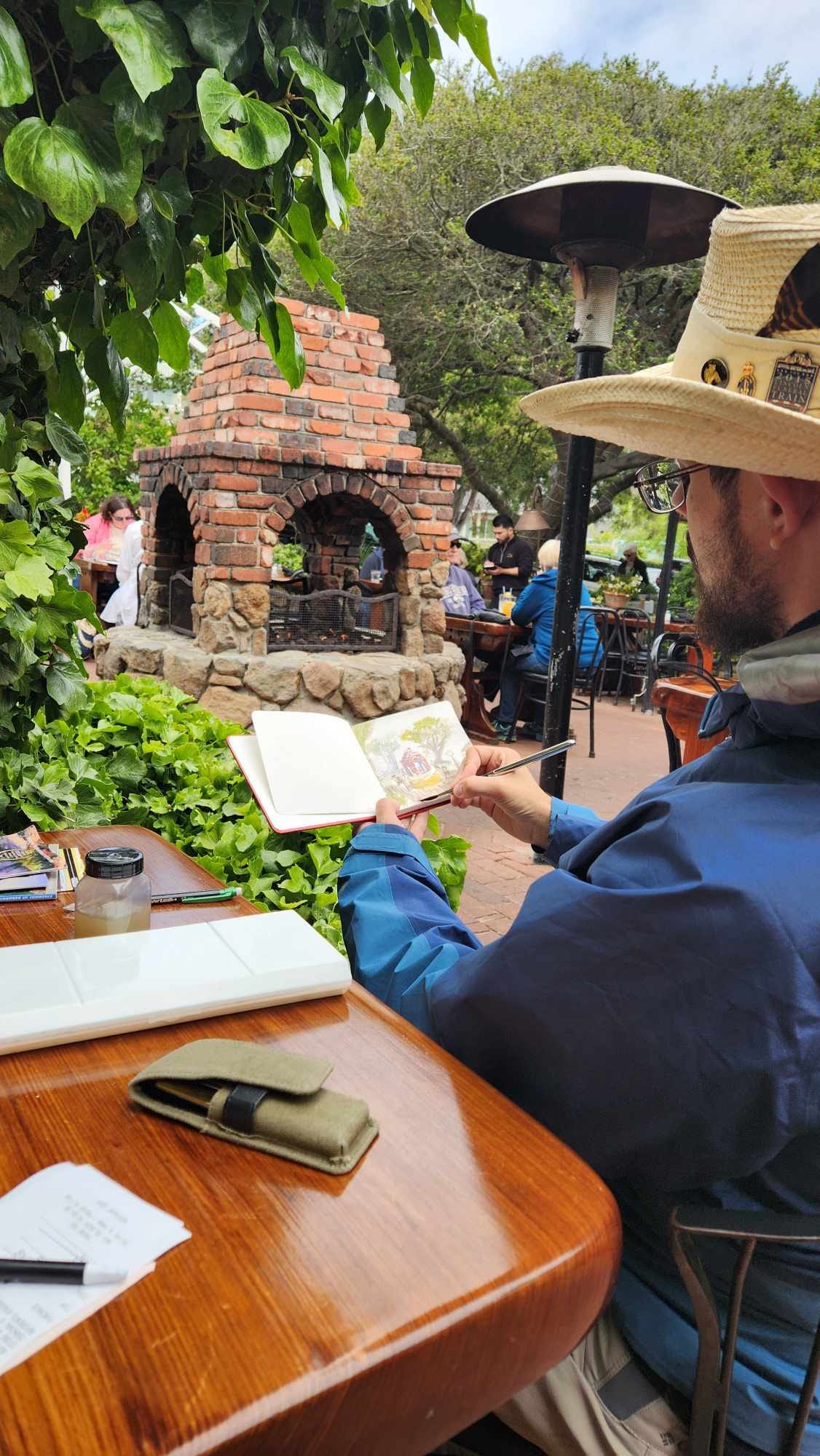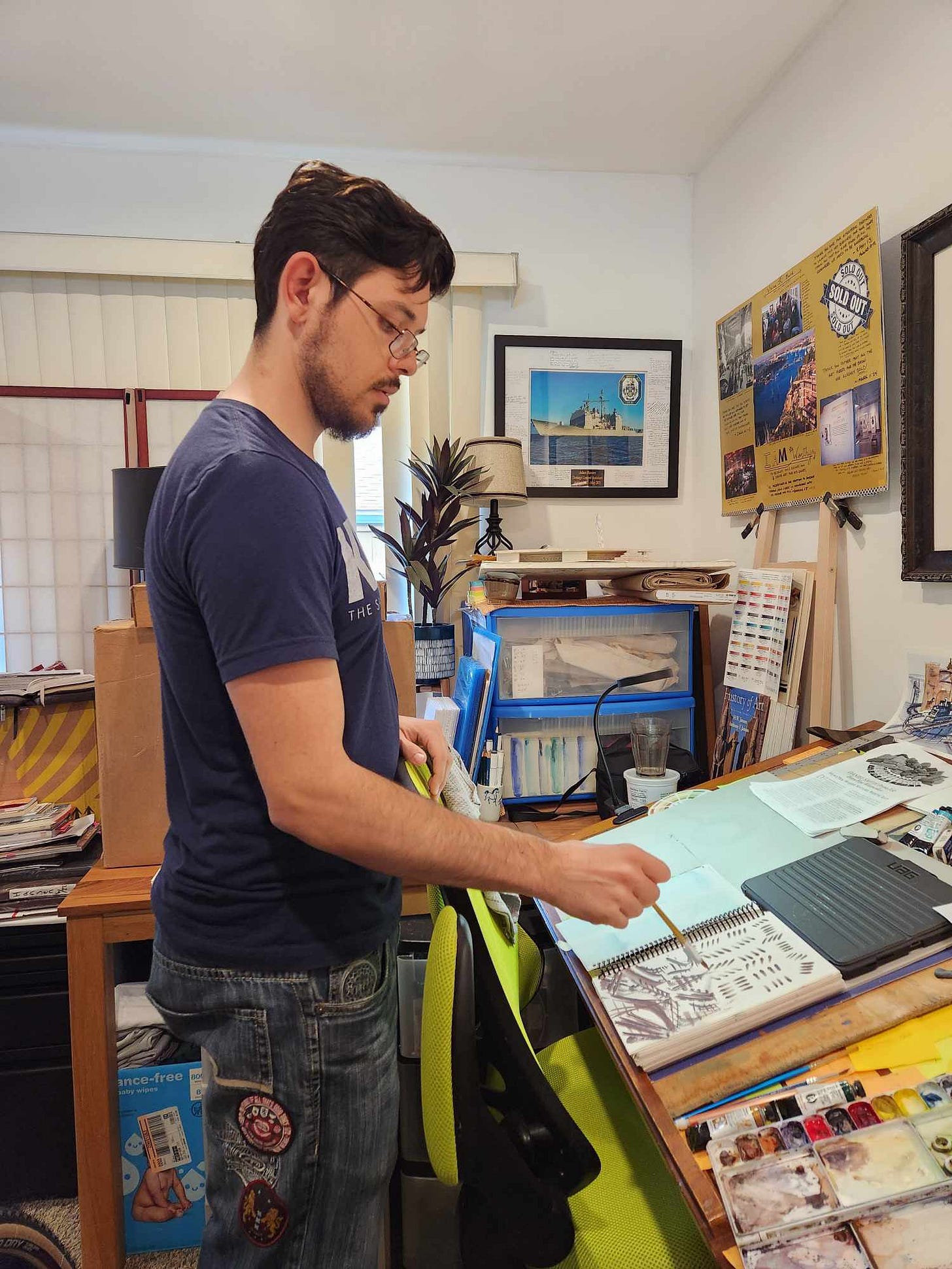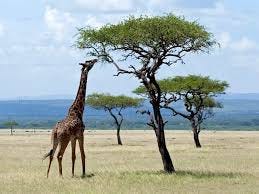Why is watercolor art so mesmerizing to us?
A curious peak into the world-wide popularity and evocative feelings of watercolor art
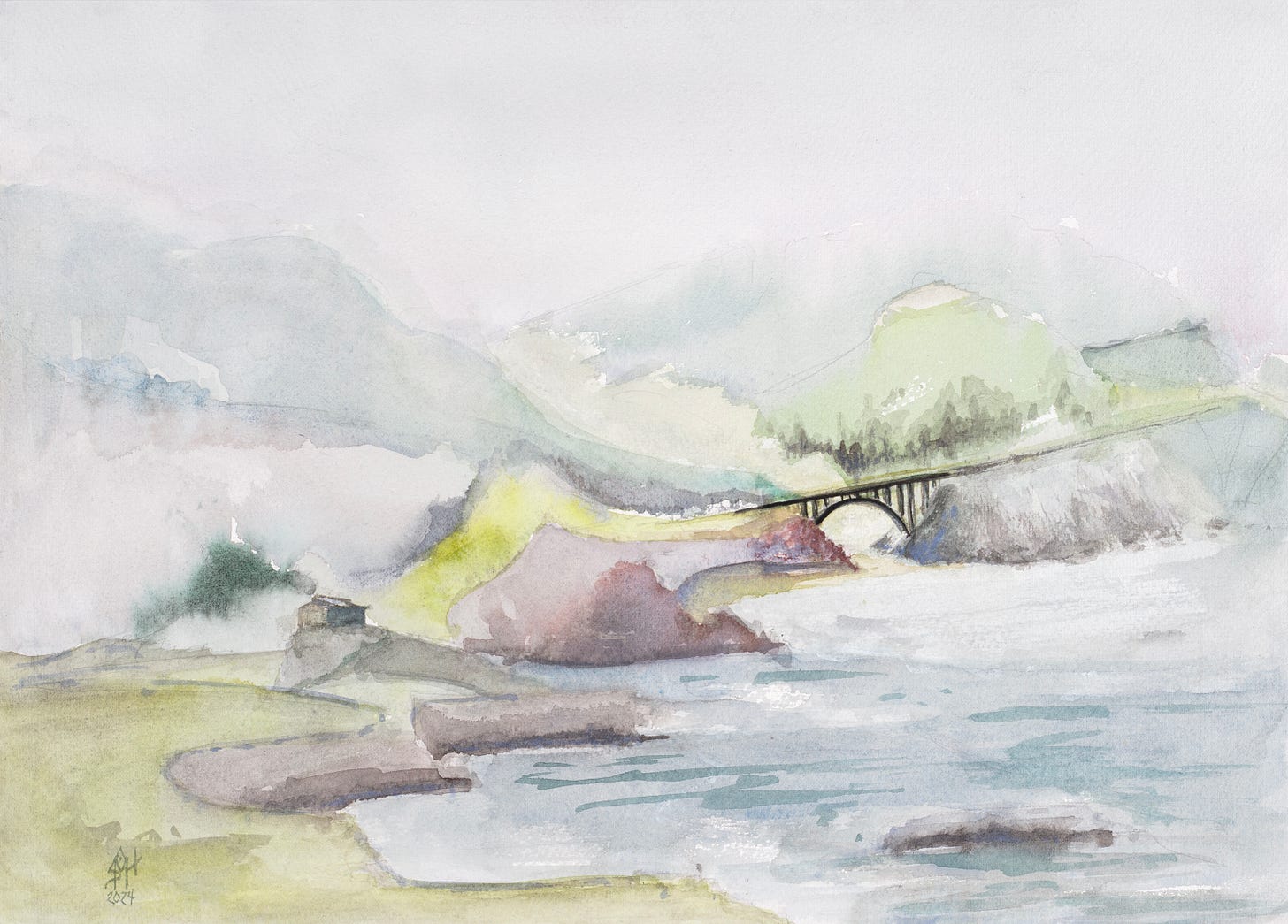
Watercolor Enchantment
Watercolor art has fascinated humanity for centuries, from papyrus paintings in ancient Egypt to floating mountains on ancient Chinese and Japanese scrolls. This unique style of painting continues to command our pause and invites us into wonder and reflection. Quite literally “Water"-Color”: Using water as a vehicle with raw (and now lab created synthetic) pigments from earth and suspended in Gum Arabic (Traditonally Tree-Sap or other various binders) to draw and create recognizable or abstract shapes is nothing new to humanity- I dare say it’s become timeless. This article intends to give you a brief Intro to the world of watercolor art, why it’s so popular, and how it’s set apart from other mediums. It then ends with a brief series of terminology for you to better appreciate the medium and speak about it with other artists, as a collector, or just out of curiosity. Read until the end for Artist Family Updates and more!
Why is Watercolor so popular?
So Beloved is this medium that watercolor painting has become the #2 preferred medium for hobbyists in America and is practiced by many professionals as a primary, secondary, or tertiary medium in their repertoire and #1 in the world due to tradition and portability. Why, you may ask?
For the American Artist and Hobbyist:
low initial entry cost for student grade materials makes it affordable
Portability (easy to transfer and clean up)
Forgiving nature with practice and time
Instruction is widely accessible, unlike in third world countries
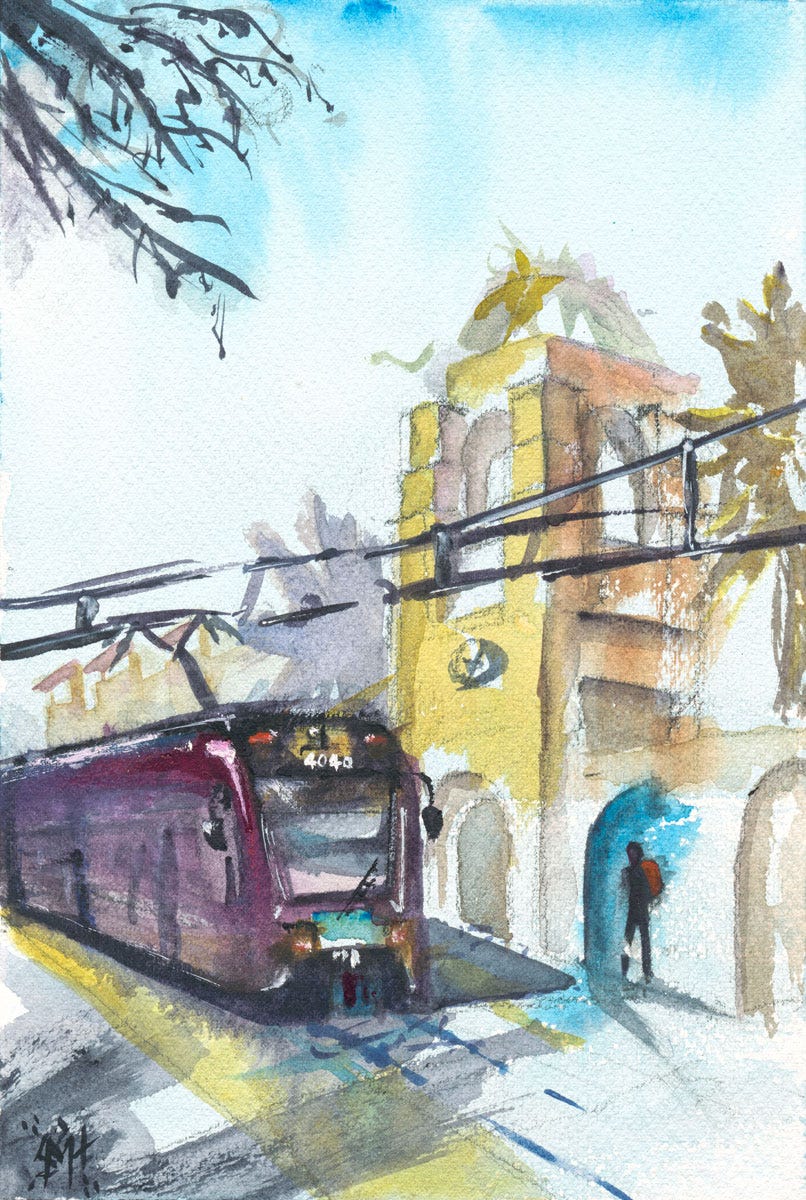
For the world-wide artist and hobbyist.
Accessibility: medium variation found in most local art shops
Potential Vibrant effects
Heritage: Europe and Asia have a long-standing cultural tradition with the medium
For Travelers/ Urban Sketchers
Top Choice for its lightweight supplies
Quick Drying Times
Ideal for on-the-go sketching (doesn’t take forever to capture simple ideas)
Able to be reworked in the studio at a later time if desired
Note: These trends have been inferred from community insights, market popularity, and suitability for hobbyists and travelers. These are not exhaustive metrics and are merely meant to serve as an overview for this article’s intent and the reader’s basic understanding. Over 10 different usborne sources were referenced to include: Jerry’s Artarama, Artists Network, Amazon and Artfile Magazine.
Now, let’s pause before our brief terms list and reflect on the emotions and descriptors watercolor can conjure up for many and how it compares with other mediums.
Feelings that watercolor evokes and how it compares to other mediums
Dreamy, ethereal, supernatural, otherworldly, or even mystical descriptors can often be associated when you hear the words watercolor. For many, the mystery is found in the flow of the pigments or the subtle washes layered one on top of another, often referred to as ‘glazing’. All artists agree that watercolor is a medium with a steep learning curve because it’s very temperamental and can seem to have a mind of its own. Learning to ‘Let go’ and allowing the paint “to breathe” and not be “overworked” are not only signs of understanding and time spent with the medium. But it also enables watercolor, a transparent medium, to shine in its best light and uniquely depict luminosity as compared to opaque mediums such as Oil, Acrylic, Gouache, and Casein paints.
Is your head spinning yet with new and strange vocab? When I first launched into watercolor and art in general, I felt like the terms were never-ending… I promise they all serve specific purposes, and this is a beautiful lexicon worth deciphering. For this article, I’ll keep to the terms that I’ve dropped throughout the post and italicized. For those wanting super deep dives into each of these concepts, I intend to write about these for my paid subscribers later this year or as time allows when not helping my kids and family. More on this later. Now, let’s build confidence with the basic terms we’ve discussed above and dive deeper next month when we learn about Johnson O’ Connor and his wisdom on vocabulary association.
Watercolor terms discussed in this article:
Below is a list of 12 words that will aid you in further understanding the world and mystique of watercolor. If you continue with our publication, we will refer to these terms often and want to make it more enjoyable for you to engage and speak about it with other artists, as a collector, friends and family, or just out of curiosity. Your consistent exposure to new terms over time will help you be informed and lead you into a deeper sense of wonder of this timeless art method.
Balboa Park fountain artwork
Watercolor Art: Any artwork that is created by using watercolor as a medium is known as watercolor art. Most watercolor artworks are watercolor paintings. However, watercolor is also used in illustrations, drawings, and mixed media artworks. The watercolor medium has been around for a long time and dates as far back as the Stone Age. It is a beautiful medium allowing various possibilities of expression.
Binder: the substance that holds pigment particles together and allows the paint to adhere to a surface like canvas, paper, or wood. It acts as a glue, creating a cohesive film after the paint dries.
Gum Arabic: a natural, water-soluble gum, primarily used as a binder in watercolor painting. It's derived from the sap of certain Acacia trees, particularly those found in sub-Saharan Africa. In art, it's used to suspend pigments in water, create glazes, and even as a resist medium.
Glazing: a painting technique where a thin, transparent layer of paint is applied over a previously painted layer, allowing the underlayer to show through and creating a sense of depth and luminosity. This technique is commonly used in watercolor and sometimes oil painting, where it can be used to build up colors, add subtle shading, and create a luminous effect.
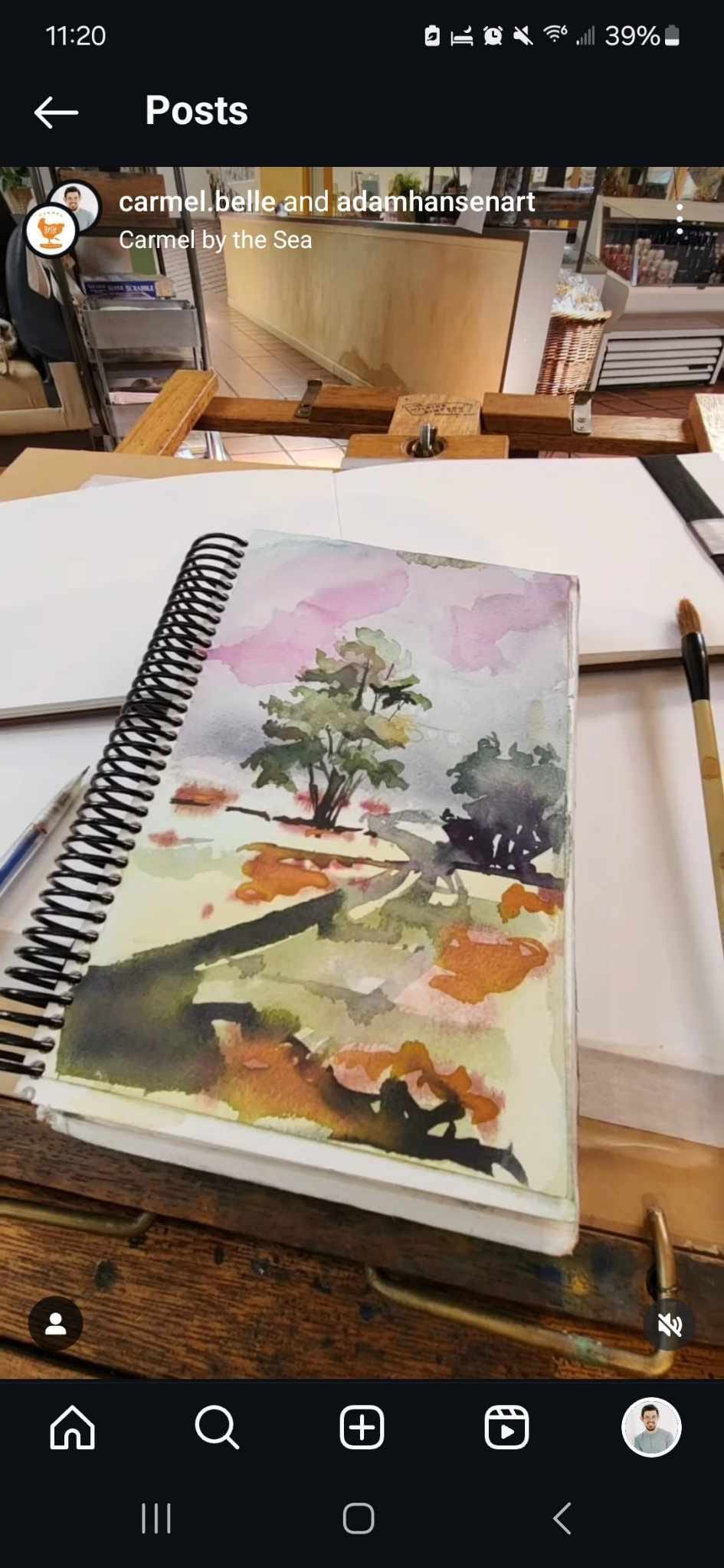
“Let Go, To Breathe, Not be overworked”:
Let Go: In watercolor, “Let Go” refers to allowing the medium’s natural flow to take over, embracing its unpredictability. It means not over-controlling the paint—letting water and pigment mingle freely (e.g., a wash for a sky in a Monterey landscape) to create organic, expressive effects.
To Breathe: “To Breathe” in watercolor artworks means leaving areas of the paper untouched or lightly painted, giving the composition space and airiness. This technique prevents overcrowding, allowing the viewer’s eye to rest (e.g., unpainted white spaces in a train station scene to evoke light)
Not Be Overworked: “Not Be Overworked” means avoiding excessive layering or reworking of paint, which can muddy colors and lose transparency—a hallmark of watercolor. It’s about knowing the timing of when to stop, preserving the freshness and spontaneity of the piece (e.g., a single granulating layer for a train track’s texture)
Medium: In art, "medium" refers to the material an artist uses to create a work of art. It encompasses both the physical substance (like paint or clay) and the specific technique or style (like oil painting or sculpture) employed. For example, a sculpture might be in the medium of bronze, while a painting could be in the medium of watercolor.
Opaque Medium: In art, an opaque medium is one that completely blocks light from passing through it. This means you can't see through it, and it covers the underlying surface completely. Opaqueness is a characteristic of certain pigments and paint types, leading to a flatter, more matte appearance compared to transparent mediums.
Transparent Medium: In art, a transparent medium allows light to pass through it without significant scattering, resulting in a clear view of objects behind it. Examples include glass and clear water. Transparent materials, like some paints, enable the layering of colors and create a sense of depth and luminosity because the light reflects off underlying layers.
Trestle Artwork Photo
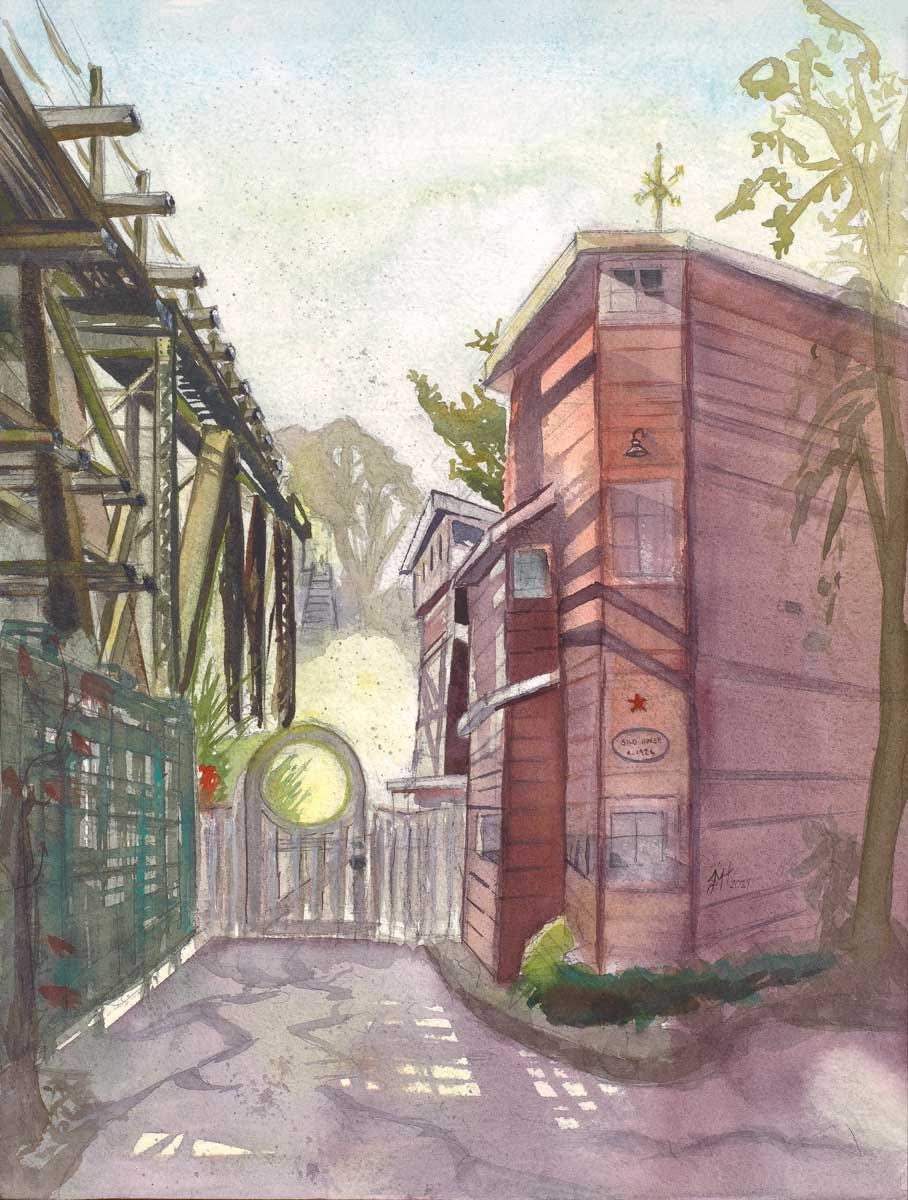
Luminosity: In art, luminosity refers to the quality of a work that evokes a sense of light and glow, often appearing to emanate from within the painting or artwork itself. It's about creating the illusion of light, using color, value, and contrast to suggest a luminous effect. Luminosity can be achieved through various techniques, including the use of glossy colors, high contrast, and complementary colors.
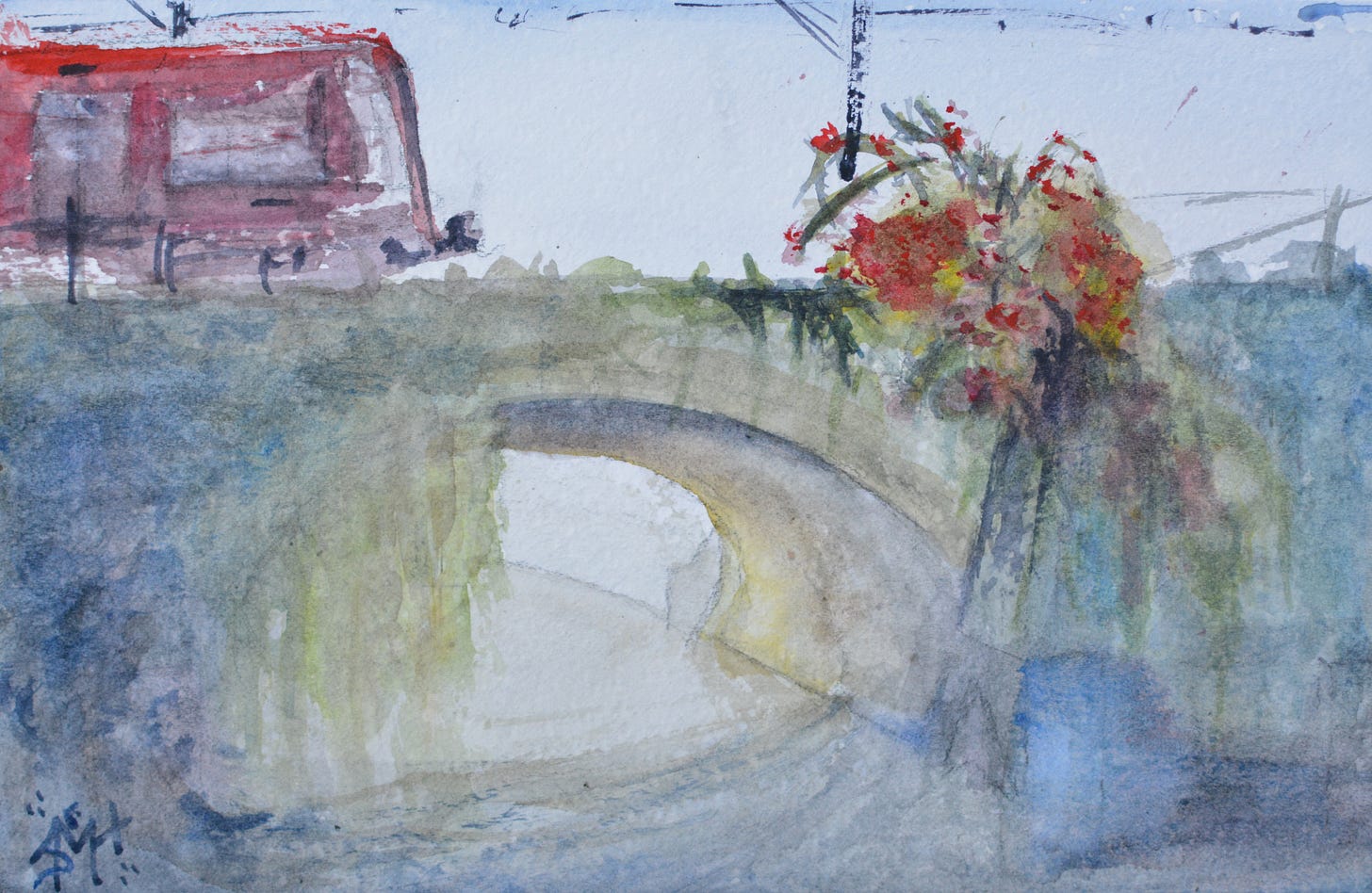
Transparency: This refers to the quality of allowing light to pass through a material, which can affect the way colors and shapes are perceived in artwork. In art, this principle plays a vital role in creating layers and depth, influencing how elements interact and how viewers experience the overall composition. Transparent objects can make it appear as if you are looking through a window, revealing what's behind.
Example: Transparent paints, like watercolors, can create layers of color where light passes through the layers, creating depth and lusity.
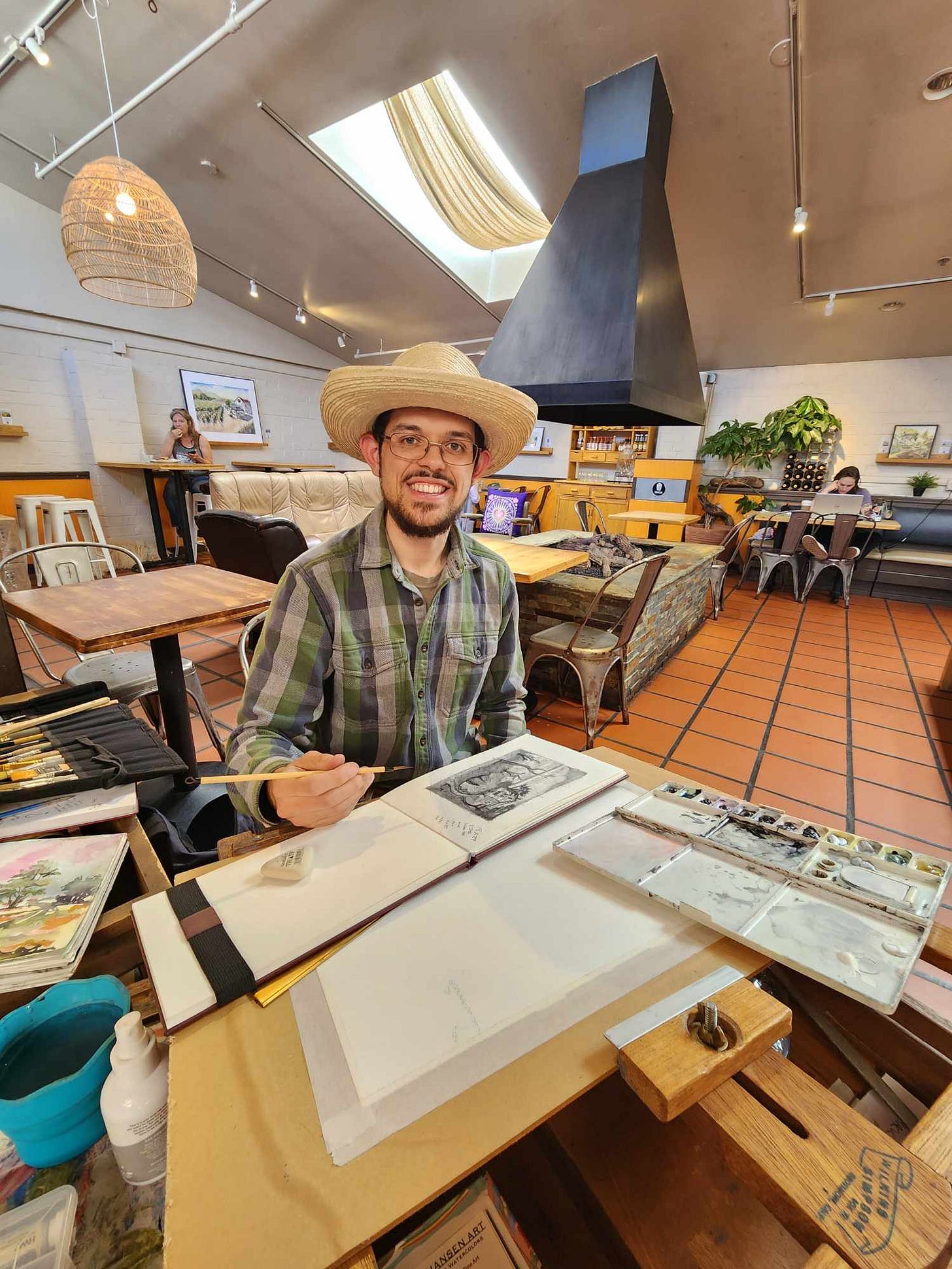
Art Show Update:
Our Show at Carmel Belle is now reaching the halfway mark. Be sure to check it out and shop our original art or mini art prints in person. If you missed this post, see all the details on how to get there and what to expect by clicking the button below.
Family Corner and Updates:
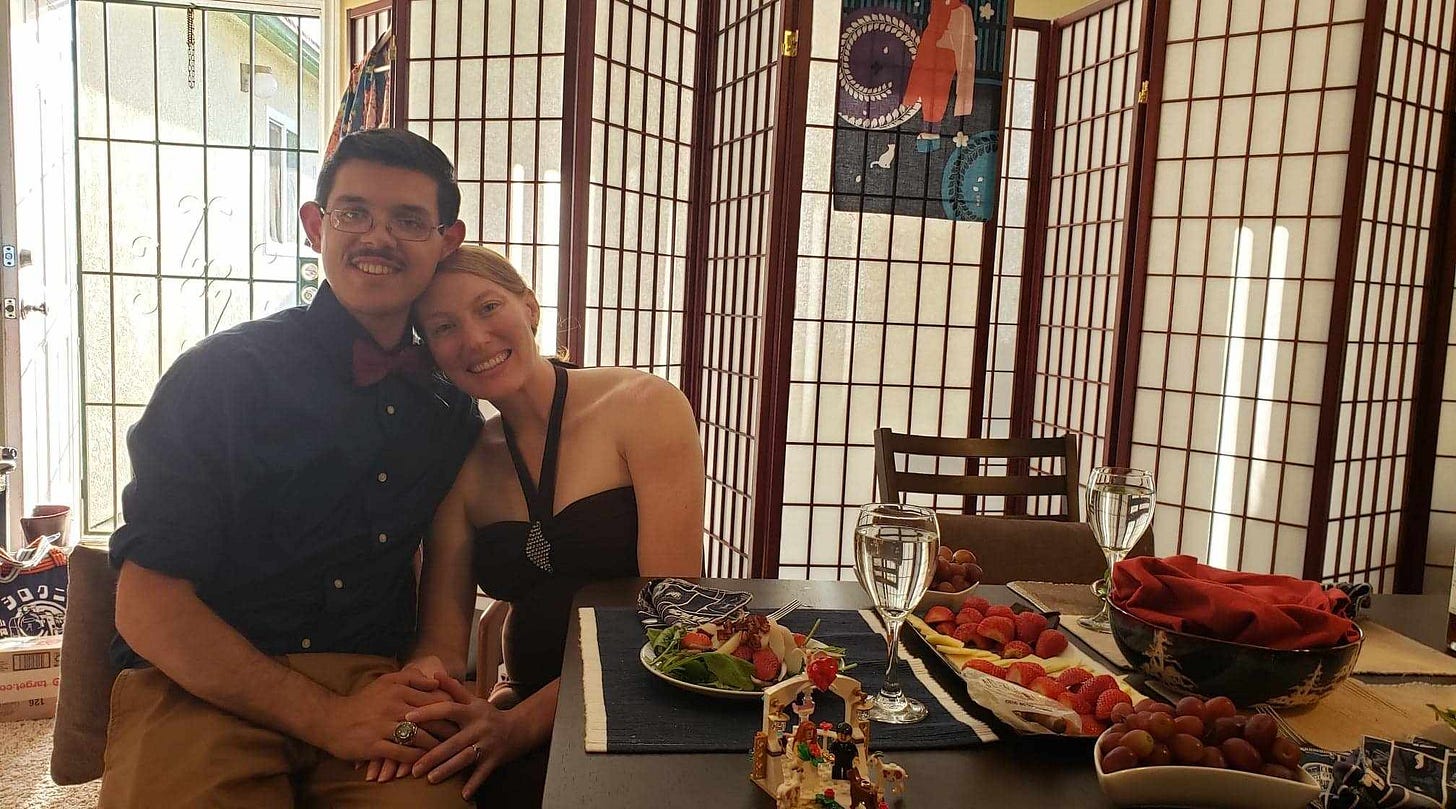
Today is our 6th wedding anniversary!!! ;) I have been married to the most amazing woman who has stood by me through military transitions, military deployments, two births, five moves in seven years, and a career change. Thank you for everything you do for our family and for being my number one supporter. Without my wife, I would never have realized how selfish I am, and without my children, I would never have realized how impatient and irritable I can be. They make me a better man, and I am grateful for this opportunity to share life with all of you and pursue my artistry as a profession long term.
Other great news: Both of our children were accepted to a nearby charter school, and I’m looking forward to walking them both to school daily.

Happy belated Easter to all! See you next month!
-Adam Hansen
Fine Artist and Designer




